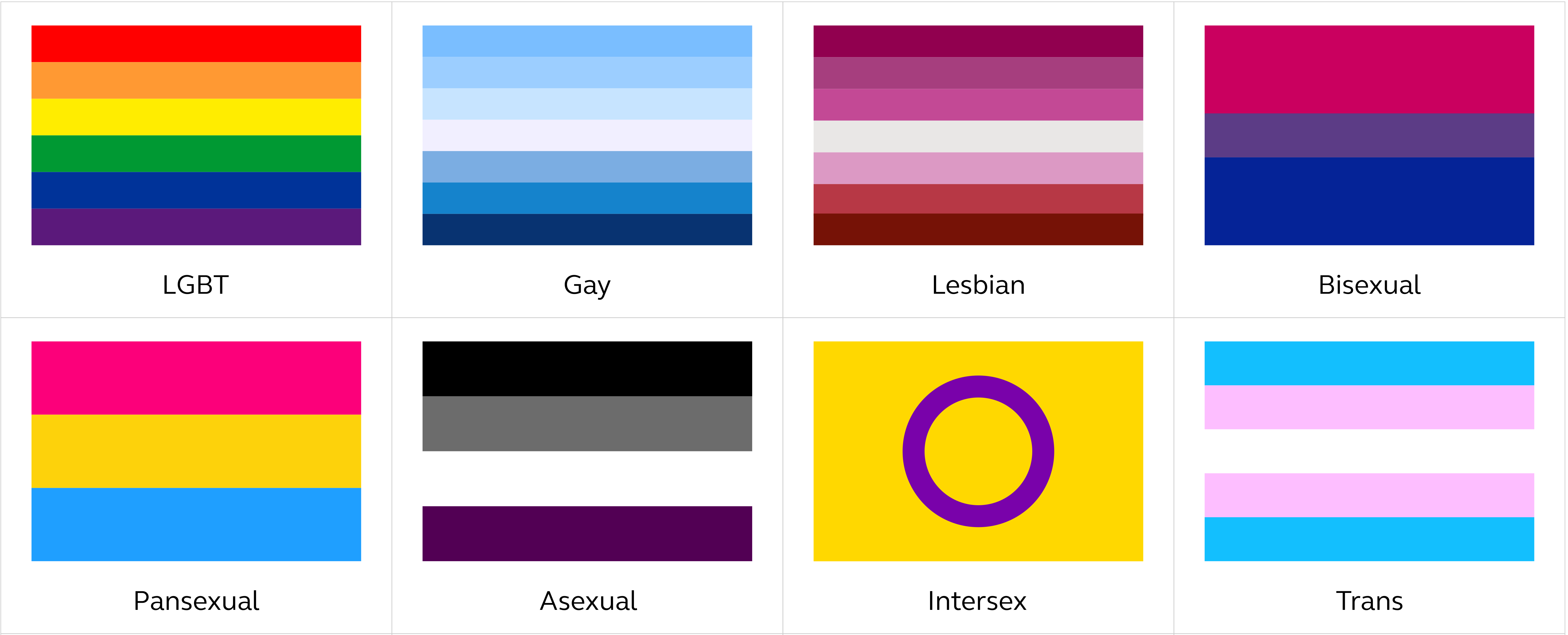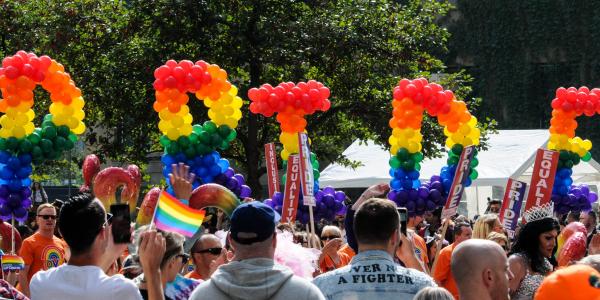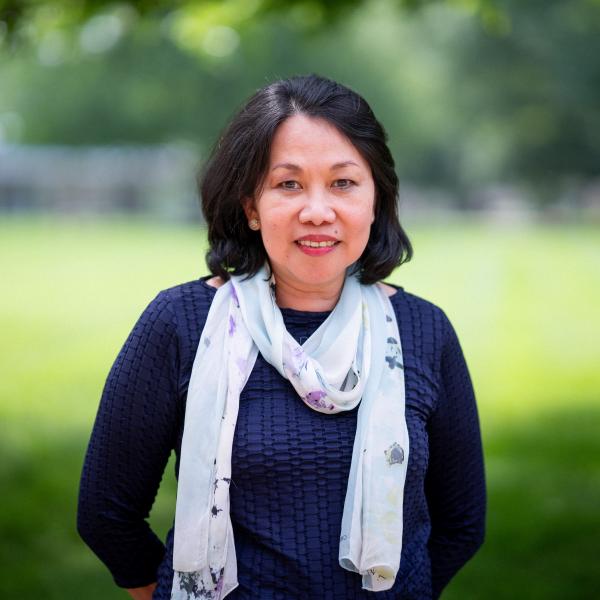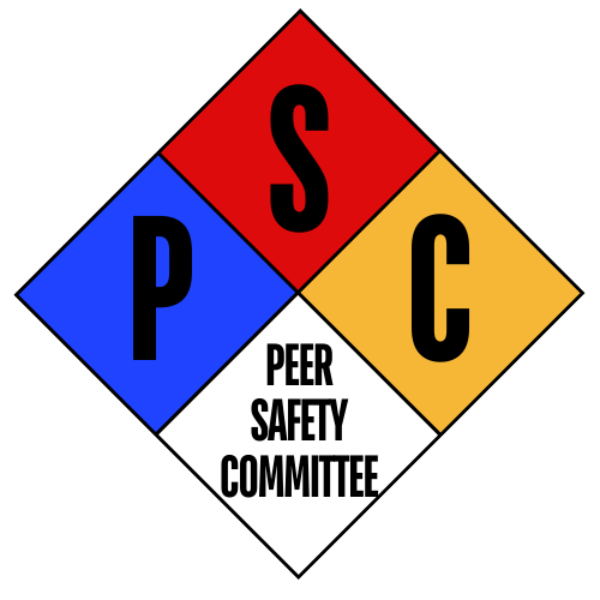Chemistry's Diversity, Equity, and Inclusion (DEI) committee has put together information and resources to celebrate Pride Month.
In June, the world celebrates Pride Month. To commemorate the event this year, Chemistry's Diversity, Equity, and Inclusion (DEI) committee has gathered information and resources that we hope will be of interest to the department at large and hopefully answers some questions you might have, including a brief overview of Pride flags. We are also proud to feature some amazing LGBTQ+ scientists. We encourage everyone to read through these scientists' brief profiles and do follow-up reading using the links provided. Theirs are some truly remarkable stories. Happy Pride Month everyone!
Background
What is Pride Month, and why do we celebrate it?
In June 1969, there was an uprising at the Stonewall Inn in Manhattan against a police raid that sparked a liberation movement. This liberation movement has inspired people to live up to the values of equality, liberty, and justice for all. Pride Month honors the Stonewall uprising, and reminds us that though much progress has been made, more action is still required to achieve equality for all LGBTQ+ people.
What progress has been made so far in the fight for LGBTQ+ equality?
- Right to marriage for all (Supreme Court ruling, 2015)
- Workplace protection for LGBTQ+ people (Supreme Court ruling, 2020)
- Hate crimes now include crimes motivated by sexual orientation or gender identity
- LGBTQ+ individuals are now serving on most levels in public offices, including 14% of the current administration’s agency appointees
What are some ways to celebrate Pride Month?
- Recall the trials the Lesbian, Gay, Bisexual, Transgender, and Queer (LGBTQ+) community has endured
- Remember those members of the community who have been lost to hate crimes or HIV/AIDS
- Recognize the resilience and determination of many LGBTQ+ individuals in the fight for a free and authentic life
- Celebrate achievements of LGBTQ+ people, including the scientists highlighted below
Pride Flags 101
- Pride flags emerged from a need to assert the presence LGBTQ+ people and their community at a time when they tended to be overlooked by mainstream culture.
- Before the rainbow-striped Pride flag was created, the LGBTQ+ community tended to use the pink triangle as a symbol, adapted from the badge that gay prisoners were forced to wear in Nazi concentration camps.
- By displaying a flag, activists of decades past were able to draw attention to their existence, find each other, and push for more inclusion.
- Though the rainbow-striped flag was often called the “Gay Pride Flag” at first, it’s now come to represent a much broader community than just gay men.
- There’s easily dozens of different Pride flags, each slightly different. Because the flags represent different queer communities, rather than official organizations, they’re dynamic and flexible.
- The first versions of the rainbow flag were flown on June 25, 1978, for the San Francisco Gay Freedom Day parade, but it was not until 1994 that the rainbow flag was truly established as the symbol for LGBTQ pride.

Flags of sexual orientations and gender identities.
A few LGBTQ+ scientists
Ben Barres, a neuroscientist who studied glial cells in the brain, helped us understand how cells interact with neurons and glial cells’ role in brain development and disease. In 1954, he was assigned female at birth. He started his career as a woman and transitioned at the age of 43. Having experienced severe differences as a scientist being a woman in contrast to being a man (he was even told that his work was much better than his sister’s, although they were the exact same person), he was a strong advocate for women scientists.
Barres started his lab in the Department of Neurobiology at Stanford University in 1993 and became chair in 2008. In 2013, Barres became the first openly transgender member of the US National Academy of Sciences. Before he died of cancer at the age of 63 in 2017, Barres said, “I lived life on my terms: I wanted to switch genders, and I did. I wanted to be a scientist, and I was. I wanted to study glia, and I did that too. I stood up for what I believed in and I like to think I made an impact, or at least opened the door for the impact to occur. I have zero regrets and I’m ready to die. I’ve truly had a great life.”
Nina Vedeneyeva was a Russian scientist born in 1882. Her research focused on the development and design of instruments for optical crystallography. After being married to a man, Vedeneyeva fell in love with Sophia Parnok, a famous Russian lesbian poet, who wrote 32 poets inspired by their relationship, which lasted until Parkok’s death in 1933.
In 1937, Vedeneyeva obtained her PhD in physics and mathematics. She became the head of the Optical Sector of the Institute of Geological Sciences in 1941, where she was developing a method for the analysis of optical properties of materials outside of the lab for the Red Army. Four years later, Vedeneyeva founded the Laboratory of Crystal Optics at the Institute of Crystallography, part of the USSR Academy of Sciences, where she stayed until she died in 1955. She was awarded the Stalin Prize, the Order of Lenin, and several other medals by the Soviet Union for her scientific work.
Martin Gouterman, born in 1931, was open about being gay at a time when very few scientists did so. After obtaining a PhD in physics from the University of Chicago, he started his independent career studying porphyrins and their optical spectra at Harvard. Together with colleagues, he explained the molecular properties by a model of porphyrin physics, the so-called four-orbital model. During his work on porphyrins, he discovered on a quantum mechanical level why blood is red (hemoglobin) and grass is green (chlorophyll). In 1966, Gouterman moved to the University of Washington, Seattle. That was also when he became fully open about being gay. Living in the historically gay Capitol Hill neighborhood, Gouterman was one of the founders of the Dorian Society, which advocated for gay men and lesbians by portraying them as respectable citizens even before the Stonewall riots. During the AIDS epidemic, he helped sick gay men by opening his home to them and became a volunteer at the first US AIDS hospice. He also helped a lesbian couple conceive a son, Mikaelin BlueSpruce.
Read more about Gouterman and his four-orbital model.
Discover more LGBTQ+ chemists you should know about.





